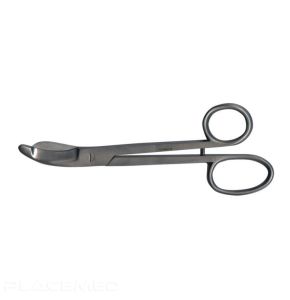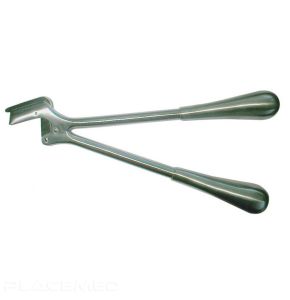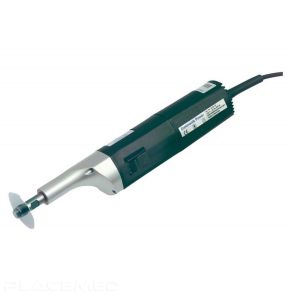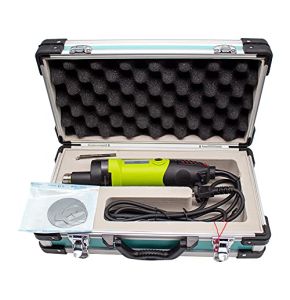Plaster Saw
18/11/2024 340
18/11/2024 437
18/11/2024 406
Medical Plaster Saw: Safe Removal of Casts
The medical plaster saw is a specialized tool used by healthcare professionals, such as doctors and nurses, to remove casts and rigid splints. When someone breaks a bone, a cast is often applied to immobilize the limb and allow the bone to heal properly. After several weeks or months, the cast needs to be removed. This medical device is designed to cut through hard plaster without injuring the soft skin underneath. It is essential for safely removing the cast. Proper use of the medical plaster saw is crucial to ensure the safety and comfort of the patient during cast removal.
How does a medical plaster saw work and how is it different from traditional saws?
The plaster saw operates differently from traditional saws used for cutting wood or metal. Traditional saws have sharp blades that rotate or move rapidly, which can be dangerous for the skin. Instead, the plaster saw uses an oscillating motion. This means the blade rapidly vibrates back and forth over a very small distance, usually less than a few millimeters. This movement allows cutting through hard plaster without cutting the soft skin underneath.
The reason the medical plaster saw does not cut the skin is that the skin is flexible and can move with the oscillating blade, while the plaster is hard and rigid and cannot move with the blade. This makes the plaster saw safe for the patient. Additionally, the blade of the medical plaster saw is not sharp to the touch. It is designed to effectively cut plaster but not the skin.
In summary, the main difference between a plaster saw and a traditional saw is the type of movement and blade design. The plaster saw is specially designed to be safe and effective in removing casts without risk to the patient.
What precautions should be taken when using a medical plaster saw?
When using a medical plaster saw, it is important to take certain precautions to avoid injuring the patient. Even though the saw is designed to be safe, improper use can cause injuries or discomfort. Here are some techniques to ensure safe use:
- Properly position the saw: Always hold the saw at a right angle to the cast. This allows for effective cutting without slipping on the surface. If the saw is held at an incorrect angle, it can slip and scratch the patient's skin.
- Do not apply too much pressure: Let the saw do the work. Apply light pressure to avoid pressing against the patient's skin. Too much pressure can push the cast against the skin and cause discomfort or injury.
- Move the saw slowly: Advance gently to control the cut and avoid sudden movements that could injure the patient. A slow movement allows better control of the saw and prevents accidents.
- Communicate with the patient: Explain what is happening and reassure the patient to reduce their stress. The noise and sensation of the saw can frighten some patients, especially children. Good communication helps the patient remain calm.
- Use protective gear: Wear gloves and protective glasses to shield against plaster particles. Plaster can produce fine dust that is harmful if inhaled or comes into contact with the eyes.
- Check the skin condition: Before starting, check for any sensitive areas or injuries under the cast. This helps to avoid these areas during the cut.
How to maintain and sterilize a medical plaster saw?
To ensure the performance and safety of the medical plaster saw, it is important to maintain it properly. Here is how to proceed:
Regular Cleaning
After each use, clean the saw to remove plaster residues that can accumulate on the blade and in the openings. Use a soft brush to remove dust and particles. Regular cleaning prevents plaster buildup, which can affect the saw's functioning and reduce its efficiency.
Blade Inspection
It is important to regularly check the condition of the blade. If it is worn, dull, or damaged, it should be replaced to ensure effective and safe cutting. A damaged blade may not cut plaster properly and increases the risk of injury to the patient.
Lubrication
The moving parts of the saw should be lubricated according to the manufacturer's recommendations. Use the appropriate lubricant for the internal mechanisms. Proper lubrication reduces wear on the parts, prevents overheating, and prolongs the tool's lifespan.
Sterilization
The medical plaster saw must be sterilized to prevent the transmission of germs between patients. After cleaning, disinfect the saw with approved disinfectant products. Some parts of the saw may be disassembled for a more thorough cleaning. Follow the sterilization protocols in place at the facility, ensuring that the products used do not damage the saw.
Storage
After cleaning and sterilization, store the saw in a dry and clean place, protected from dust and moisture. Use a protective cover if possible. Proper storage prevents damage and ensures that the saw is ready for the next use.
What are the techniques for effectively removing a cast with a medical plaster saw?
To remove a cast effectively while minimizing stress for the patient, follow these steps:
- Patient Preparation: Explain the procedure to the patient. Reassure the patient by explaining that the saw is designed not to injure the skin. Answer their questions and ensure they are comfortable. Good communication can reduce the patient's anxiety.
- Marking the Cast: Draw lines on the cast to indicate the cutting areas. Use a marker to draw the cutting lines, usually on the sides of the cast. This helps guide the saw and ensure a straight and uniform cut.
- Cutting the Cast: Hold the saw at a right angle and apply light pressure. Start the cut following the drawn lines. Move slowly and ensure the blade only cuts the plaster and not the skin. It is important to take breaks if necessary to prevent the blade from overheating.
- Opening the Cast: After cutting the plaster on both sides, use a spreader or special pliers to gently open the cast. Do not force it to avoid injuring the patient. If the cast is difficult to open, check if there are any areas not yet cut.
- Removing the Cast: Carefully remove the cast from the patient's limb. Be cautious of areas where the cast may stick to the skin or hair. Ask the patient to gently move the limb if necessary.
- Post-Removal Care: Clean the patient's skin if necessary, as it may be dry or irritated. Check for any redness, irritation, or wounds. Provide advice for rehabilitation or home care, such as exercises to regain strength and mobility in the limb.
What are the recent developments in plaster saw technologies?
Plaster saws have evolved to improve safety and efficiency. Here are some recent innovations:
- Lightweight Saws: New models are made with lightweight materials such as aluminum alloys. This reduces operator fatigue, especially during prolonged use. A lighter tool is easier to handle and improves cutting precision.
- Noise Reduction: Modern saws are designed to be quieter thanks to improved motors and noise insulation systems. This reduces stress for the patient, who may be frightened by the loud noise of older saws, especially children and anxious individuals.
- Integrated Suction Systems: Some models have built-in vacuums that suction plaster dust during cutting. This keeps the environment clean, reduces health risks associated with inhaling dust, and improves comfort for both the patient and the practitioner.
- Improved Blades: Blades are now made with more durable materials such as stainless steel or titanium. They last longer and cut plaster more effectively, reducing the need for frequent replacements.
- Enhanced Ergonomics: The saw handles are designed to fit the shape of the hand, with non-slip coatings. This reduces the risk of slipping and injuries related to poor grip. Better ergonomics also prevent musculoskeletal disorders in the practitioner.
- Wireless Technology: Battery-operated saws are now available, offering greater mobility without being limited by a power cord. Modern batteries have a long lifespan and recharge quickly, which is convenient for professionals on the move or in environments with limited access to electrical outlets.
- Digital Controls: Some saws are equipped with digital controls to adjust the blade speed and oscillation. This allows the practitioner to precisely adjust the tool based on the type of plaster and the patient's needs.
These developments make plaster saws safer and easier to use, benefiting both patients and healthcare professionals.
The medical plaster saw is an essential tool in the medical field for safely removing casts. Understanding its operation, taking necessary precautions, and using the right techniques ensures patient comfort and safety. Technological innovations continue to improve this tool, making it even more effective and secure. At Placemed, we offer a range of high-quality plaster saws tailored to the needs of healthcare professionals. Feel free to explore our products to find the saw that best suits your needs.
 Francais
Francais 



